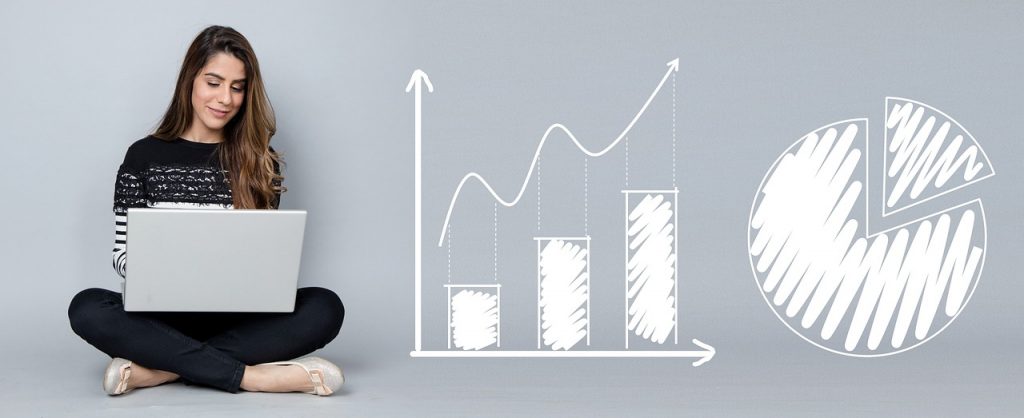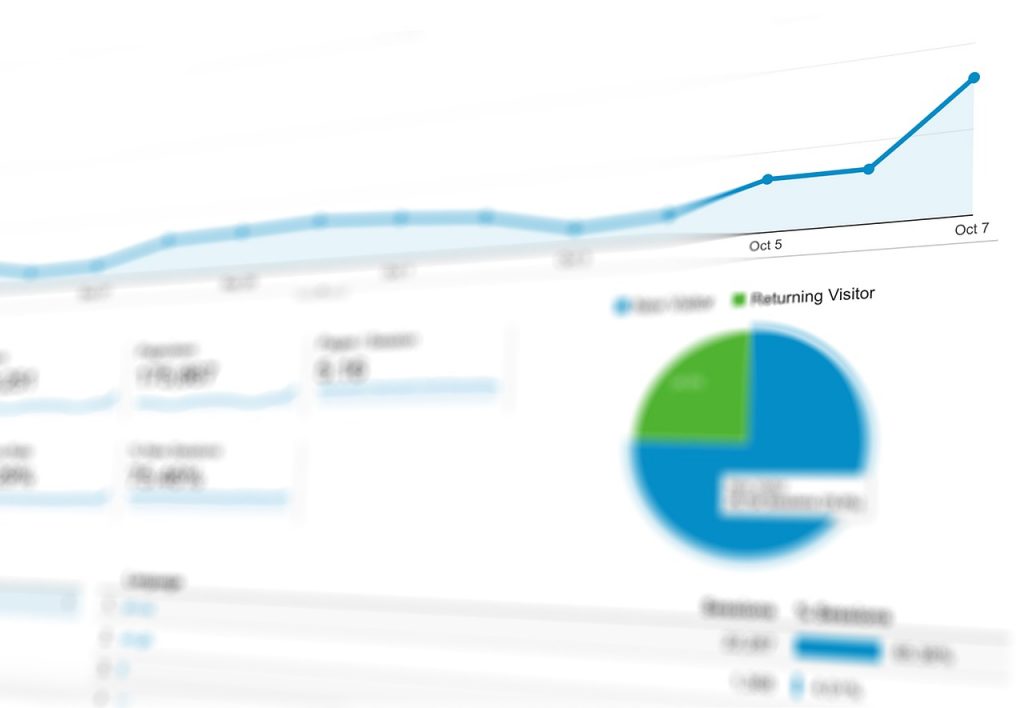Increasing your website’s conversion rate is essential for driving business growth. Whether you’re aiming for more purchases, sign-ups, or form submissions, optimizing your site for conversions ensures that you’re turning website visitors into customers. Conversion Rate Optimization (CRO) helps you achieve measurable business results by improving the efficiency of your digital assets.

In this comprehensive guide, we’ll walk you through proven strategies to increase your conversion rate and ultimately, your business outcomes.
What Is a Conversion Rate?
A conversion rate is the percentage of website visitors who complete a desired action, such as making a purchase, signing up for a newsletter, or filling out a form. For example, if your website has 1,000 visitors and 50 of them make a purchase, your conversion rate is 5%.
Tracking your conversion rate helps you gauge how effective your site is at converting traffic into leads or customers, which in turn helps you assess the return on investment (ROI) for your marketing efforts.
Here’s a breakdown of common conversion goals:
- E-commerce: Purchases, cart completions.
- Lead generation: Form submissions, newsletter sign-ups.
- B2B: Contact requests, demo bookings.
- SaaS: Free trials, subscription sign-ups.
Knowing your industry’s average conversion rate can also help you set realistic benchmarks. For instance, the average e-commerce conversion rate sits at about 2.58%, while B2B companies typically see higher rates, ranging between 5-10%. Understanding these averages helps you measure how well your site performs relative to your competition.
Common Reasons for Low Conversion Rates
Before we dive into actionable strategies to increase conversion rates, it’s important to recognize the common pitfalls that can lead to low conversion rates. These include:
- Complex or Confusing Website Design: If users find your site difficult to navigate, they’ll leave without converting. A complicated layout or unclear navigation can frustrate visitors and push them away.
- Weak or Unclear Calls to Action (CTAs): Without a strong and obvious CTA, users may not know what step to take next, leading to missed opportunities.
- Slow Page Load Times: Visitors are likely to abandon sites that take too long to load. Studies show that even a one-second delay can reduce conversions by up to 7%.
- Cart Abandonment: High cart abandonment rates are a major issue for e-commerce businesses. Factors like unexpected costs, complicated checkout processes, and lack of payment options can contribute to abandonment.
- Lack of Trust: If your website looks outdated or lacks security features, visitors may be hesitant to convert. Clear trust signals, such as SSL certificates or customer reviews, can alleviate these concerns.
Proven Strategies for Improving Conversion Rate
Once you’ve identified the potential reasons for your low conversion rate, it’s time to implement strategies that will make a tangible difference. Improving your conversion rate isn’t about making arbitrary changes, it’s about using data-driven approaches to optimize the user experience, guide visitors through the funnel more effectively, and encourage action at the right moments.

Below, we’ll explore a series of proven strategies our team has successfully applied to help clients across industries boost their conversions, from refining website design to simplifying checkout processes. The tactics presented are backed by real results, showing just how impactful small, targeted adjustments can be.
1. Optimize Your Website for a Better User Experience (UX)
User experience (UX) plays a pivotal role in determining how easily visitors can navigate your site and take the desired action. A poor user experience can lead to higher bounce rates and fewer conversions.
Simplify Your Design
A clean, well-organized design can help users find what they’re looking for quickly. Avoid cluttering your site with too many elements. Use clear typography, consistent branding, and effective spacing to ensure a smooth experience.
Actionable Tip: Conduct usability testing with real users to see where they struggle to complete tasks on your site. Tools like UserTesting or Hotjar can help you gather valuable insights.
Mobile Optimization
With a significant number of visitors accessing websites on mobile devices, ensuring that your site is mobile-friendly is crucial. A mobile-optimized site should be easy to navigate, with buttons and CTAs clearly visible, and text that doesn’t require zooming.
Key Stat: Research shows that 57% of users will not recommend a business with a poorly designed mobile site. Therefore, mobile responsiveness directly impacts your conversion rate.
Whitespace and Readability
Whitespace is an important design element that allows your content to breathe. It breaks up sections and makes your site more readable. Ensure your text is easy to scan by using bullet points, headings, and short paragraphs.
2. Strengthen Your Call to Action (CTA)
Your CTA is one of the most crucial elements of your website. It tells visitors what action to take and drives them towards conversion. An ineffective CTA could mean the difference between a successful lead and a missed opportunity.
Use Direct, Actionable Language
A strong CTA uses clear and direct language. Rather than generic phrases like “Submit” or “Click Here,” try using action-oriented language like “Buy Now,” “Get Started,” or “Claim Your Free Trial.” This encourages immediate action and makes the next step clear.

Example: One of our e-commerce clients struggled with poor conversion rates despite high traffic. After reviewing their CTA, our team recommended changing the wording from “Submit” to “Get My Discount Today” and repositioning the button above the fold. Within a month, the client saw an 18% increase in conversions, directly attributed to this change in their CTA language and placement.
Strategic Placement of CTAs
Make sure your CTA buttons are placed strategically throughout your site. Place them at the top of the page, near key decision points, and at the end of your content. A CTA should always be visible and easy to find.
Pro Tip: Use a contrasting color for your CTA button to make it stand out. Test different placements and colors using A/B testing to see what works best for your audience.
Create a Sense of Urgency
Phrases like “Limited Time Offer” or “Only a Few Left in Stock” create urgency and prompt users to act quickly. However, use this tactic sparingly to avoid sounding disingenuous.
3. Conduct A/B Testing to Find What Works
A/B Testing, also known as split testing, involves creating two versions of a webpage to see which one performs better. This helps you determine which elements are most effective at driving conversions.
What to Test:
- Headlines: A compelling headline can grab attention and encourage visitors to stay on your page longer.
- CTA Buttons: Test different phrases, colors, or placements to see which ones generate the most clicks.
- Images and Layouts: Visual elements can impact conversion rates. Experiment with different layouts, image sizes, and styles.
Tools for A/B Testing
Platforms like Optimizely, and VWO make it easy to set up A/B tests. These tools allow you to segment audiences and run multiple tests simultaneously.
Example: A SaaS client was unsure why their sign-up form was underperforming. Our team ran A/B tests on various elements, including the headline, CTA color, and form length. After analyzing the data, we implemented the version with a shorter form and more engaging headline. This small tweak resulted in a 24% increase in sign-ups within two weeks, demonstrating the power of data-driven design decisions.
Measure Results
When running an A/B test, focus on key metrics like conversion rate, click-through rate, and bounce rate. Make data-driven decisions based on what works best for your audience.
4. Leverage Data Analytics for Better Insights
Understanding how visitors interact with your website is essential for conversion rate optimization. Data analytics tools can provide valuable insights into user behavior, allowing you to make informed changes.
Use Heatmaps and Session Recordings
Heatmaps show you where visitors are clicking and scrolling on your site, which helps you identify areas of interest or confusion. Session recordings allow you to watch real-time user interactions, so you can see where users might be dropping off.
Tools like Hotjar, Crazy Egg, and FullStory offer heatmaps and session recordings, helping you uncover opportunities to optimize.
Track Key Metrics
Regularly monitor metrics such as:
- Bounce rate: How many users leave your site without interacting.
- Average session duration: How long visitors stay on your site.
- Exit pages: Which pages are causing users to leave.

By identifying problem areas, you can implement targeted improvements.
5. Speed Up Your Website to Improve Conversions
Page speed is a critical factor in user experience and conversion rates. A slow-loading website frustrates users, causing them to abandon it before converting.
Compress Images and Use Optimized File Formats
Large image files are one of the most common causes of slow page load times. Use image compression tools like TinyPNG or ShortPixel to reduce file sizes without compromising quality. Also, use modern file formats like WebP for even better performance.
Use Browser Caching and Minify Code
By enabling browser caching, users can store your site’s static resources (like images and scripts) on their local devices, which reduces load times on repeat visits. Minifying your code—removing unnecessary spaces, line breaks, and comments—can also enhance site speed.
Leverage a Content Delivery Network
A Content Delivery Network (CDN) ensures that your website’s data is distributed across multiple servers worldwide, reducing the distance between your server and your users. This helps improve load times, especially for global visitors.
Example: An online retailer approached us after noticing high bounce rates and poor conversion metrics. Our team identified slow page load times as a key issue. We optimized image sizes and implemented a CDN. As a result, page load times dropped from 5 seconds to just under 2 seconds, leading to a 30% boost in conversions. This speed improvement not only enhanced the user experience but also had a direct impact on sales.
6. Build Trust with Social Proof
Social proof is a psychological phenomenon where people look to others’ actions to inform their own decisions. Building trust through social proof can significantly increase conversions.
Display Customer Reviews and Testimonials
Positive reviews and testimonials show potential customers that others have had a good experience with your brand. Display them prominently on product pages or the homepage to build credibility.
Pro Tip: Use third-party review platforms like Trustpilot or Yelp to showcase authentic reviews.
Use Trust Badges and Certifications
Trust badges – like SSL certificates, payment security icons, and money-back guarantees – instill confidence in users, especially during the checkout process.
Showcase Case Studies
For B2B companies, case studies offer compelling evidence of your ability to deliver results. Include detailed case studies that show how you’ve helped clients achieve specific goals, such as increasing their sales or improving their lead generation efforts.
7. Personalize Your Website for Individual Users
Website personalization allows you to tailor the content and experience for each user based on their behavior, preferences, or demographics. Personalized experiences can greatly increase engagement and conversions.
Dynamic Content
Use dynamic content that adapts based on the visitor’s past interactions. For instance, you can display product recommendations based on previous purchases or browsing history.
Personalized CTAs
Tailor your CTAs to different user segments. For example, first-time visitors could see a CTA for signing up for a newsletter, while returning visitors might see an offer for a discount on their next purchase.
Example: Amazon’s personalized recommendation system is a perfect example of how personalization can lead to increased conversions. By suggesting relevant products, Amazon drives a significant portion of its revenue through upsells and cross-sells.
8. Simplify Your Checkout Process
A complicated or lengthy checkout process can cause cart abandonment, especially for e-commerce businesses. Simplifying this process can lead to a significant increase in conversions.
Minimize Form Fields
Only ask for the information you absolutely need. Studies have shown that reducing the number of form fields can lead to higher completion rates.
Example: Expedia increased their revenue by $12 million annually by removing a single optional field in their booking form.
Offer Multiple Payment Options
Offering multiple payment options such as PayPal, Apple Pay, or Google Pay can reduce friction for customers and improve conversion rates.
Provide a Guest Checkout Option
Forcing users to create an account before completing a purchase is a common barrier to conversion. Offering a guest checkout option can speed up the process and reduce cart abandonment.
9. Create Targeted Retargeting Campaigns
Not all users will convert on their first visit. Retargeting is a strategy that allows you to reach users who have previously visited your site but didn’t convert. By showing them targeted ads, you can bring them back and encourage them to complete the desired action.
Use Dynamic Retargeting Ads
Dynamic retargeting ads display the exact products or services a visitor viewed, reminding them of their initial interest. These ads can be particularly effective in the e-commerce space, where users may browse but not immediately make a purchase.
Segment Your Audience
Segment your retargeting audience based on behavior, such as cart abandoners, product page viewers, or blog readers. This allows you to create highly personalized ad campaigns for each group, improving relevance and engagement.
10. Use Exit-Intent Popups to Capture Leads
Exit-intent popups appear when a user is about to leave your website. These popups offer one last opportunity to capture leads or convert visitors before they exit.
Offer a Special Deal or Discount
Exit-intent popups that offer a discount or promotion can be particularly effective in convincing users to complete their purchase. For example, offering a 10% discount for first-time buyers can turn an abandoned cart into a completed order.
Example: One of our fashion retail clients had a cart abandonment rate above industry standards. We recommended implementing exit-intent popups offering a 10% discount for first-time buyers. After deploying the popup, the client saw a 50% increase in completed purchases within a month, as the offer effectively convinced hesitant shoppers to complete their transactions.
Collect Emails
If a user is about to leave, use exit-intent popups to collect their email in exchange for a resource, such as a free eBook, newsletter, or exclusive offer. This gives you the opportunity to nurture them through email marketing.
Final Thoughts: Increase Your Conversion Rate Today
Increasing your conversion rate requires a combination of data-driven strategies and user-centered design improvements. By optimizing your website for user experience, simplifying your checkout process, and using targeted retargeting campaigns, you can turn more visitors into customers and boost your bottom line.
Our team of experts specializes in Conversion Rate Optimization and can help you implement tailored strategies to drive better results. Contact us today for a free CRO consultation and start converting more visitors into customers!